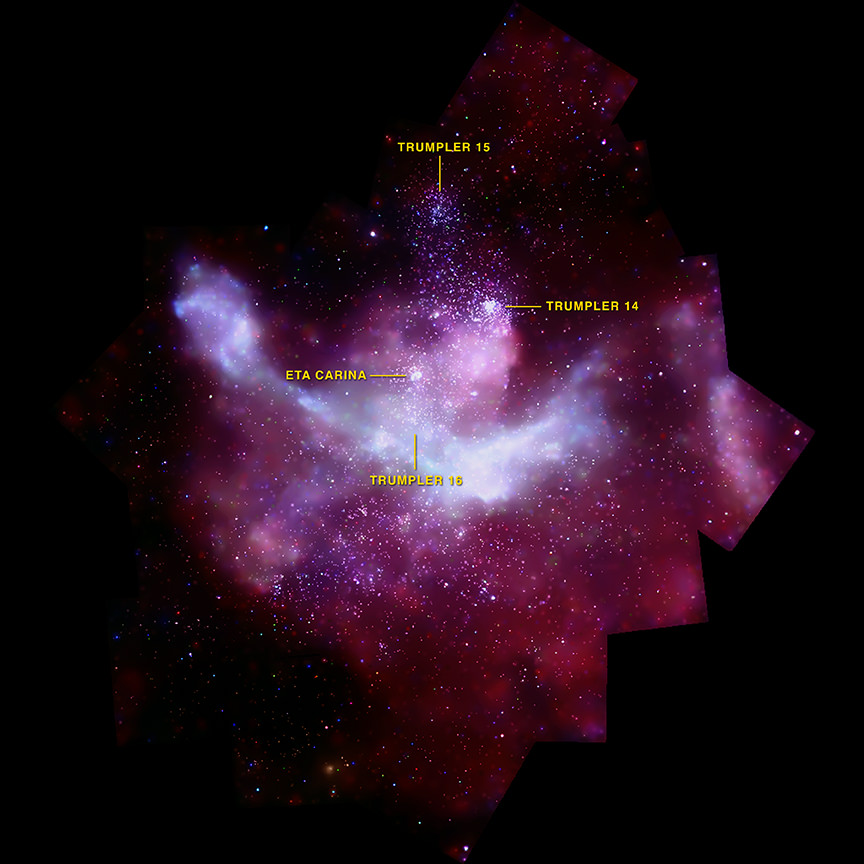[/caption]
We are all just star stuff… But when it comes to the elements produced by a star, it just doesn’t get any heavier than iron. So how do more exotic elements come into existence? Try the Great Cosmic Recycler – supernova. Its energy disperses newly synthesized materials right into the interstellar neighborhood where an enriched generation of stars begin life again.
The beautiful Carina Nebula may very well be a literal supernova factory. Encompassing a large field of 1.4 square degrees, Chandra made of a mosaic of 22 individual pointings. In total, the image represents 1.2 million seconds – or nearly two weeks – of Chandra observing time. In addition, multi-wavelength data, such as infrared observations from the Spitzer Space Telescope and the Very Large Telescope (VLT), were then added to the mix to reveal that the supernova process has already begun. Clues, such as the lack of bright x-ray sources from Trumpler 15, suggest its massive stars have already been destroyed. In addition, six candidate neutron stars – instead of just one – provide additional evidence that supernova activity is gearing up in Carina.
But stellar destruction isn’t the only evidence Chandra has found. A new population of young massive stars has also been detected… potentially doubling the number of known young, massive stars which are usually destined to be destroyed later in supernova explosions. In the composite image, they appear as bright X-ray sources scattered across the x-ray emission like freckles on a child’s face. But what really holds our interest is the infamous Eta Carinae – a massive, unstable star on the brink of extinction.
Thanks to this latest research, we now know it’s not alone…


Sigh! The universe is 13.7±0.3 billion years old based on too many independent scientific investigations for it to be wrong.
If the universe were 137 billion years old, then where is the proof of this?
Also only fusion occurs in stellar cores. The conflagration of the supernova generates the heavier elements during the collapse and/or the reflected expansion.
“Proof of the universe being much older are many.”
Pensez-vous faire une blague ici?
“Proof of the universe being much older are many.”
(taken from my deleted comment)
Proof is too strong a word, but I believe there is much evidence to support this assertion, No joke
Then you are wrong. Sorry.
“My own model” So this is “personal theory”?
Don’t be sad if your comment is deleted as per UT policy!